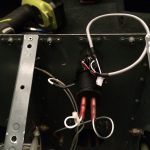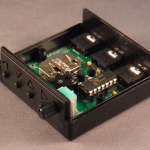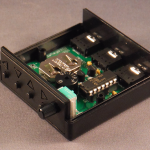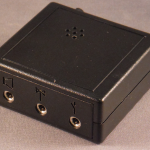I recently put my AcuRite weather station back up after having it sitting in the garage for a year or so. I have the Internet Bridge, which recently got a firmware update, and wanted to have it reporting to both AcuRite and Weather Underground.
AcuRite’s site will apparently update WU, but only at 15 minute intervals. And, I wanted to also collect the data locally so I can feed it into Splunk or some other tool for my own use.
Problem is, the AcuRite gateway box only sends data (via HTTP GET) to one fixed hostname that’s hard coded, hubapi.myacurite.com. SO… first we intercept those DNS calls to send them where we want them. In named.conf:
acl wxbridge-only {
ip.of.wx.bridge/32;
};
view "wxbridge-view" {
match-clients { wxbridge-only; };
zone "hubapi.myacurite.com" {
type master;
file "hubapi.myacurite.com";
};
};
And the zone file:
$TTL 14400
@ IN SOA localhost. dale.botkin.org. (
2016081803
3600
3600
604800
14400 )
@ IN NS localhost.
hubapi.myacurite.com. IN A ip.of.local.server;
Now the weather bridge, and ONLY the weather bridge, gets your local machine’s IP address for hubapi.myacurite.com. So next we create a PHP script and use Apache to point /weatherstation to it (ScriptAlias /weatherstation /var/www/cgi-bin/updateweatherstation.php in my case). The script sends the original HTTP request to hubapi.myacurite.com, then reformats it and sends it to wunderground.com. It’s also preserved in the Apache access log, so you can ingest it into Splunk. You could also syslog it or write it to a file, whatever you want. I started out using a script I found that Pat O’Brien had written, but ended up rewriting it almost entirely. It’s been years since I wrote a PHP script.
<?php
// First send it to AcuRite, no massaging needed...
$acurite = file_get_contents("http://hubapi.myacurite.com/weatherstation/updateweatherstation?" . $_SERVER['QUERY_STRING']);
echo $acurite;
// Now re-format for wunderground.com. We don't always
// get every parameter, so only send those we do get and
// strip out those that wunderground won't accept.
$msg = "";
$winddir = (isset($_GET['winddir']) ? "&winddir=".$_GET['winddir'] : null);
$windspeedmph = (isset($_GET['windspeedmph']) ? "&windspeedmph=".$_GET['windspeedmph'] : null);
$humidity = (isset($_GET['humidity']) ? "&humidity=".$_GET['humidity'] : null);
$tempf = (isset($_GET['tempf']) ? "&tempf=".$_GET['tempf'] : null);
$rainin = (isset($_GET['rainin']) ? "&rainin=".$_GET['rainin'] : null);
$dailyrainin = (isset($_GET['dailyrainin']) ? "&dailyrainin=".$_GET['dailyrainin'] : null);
$baromin = (isset($_GET['baromin']) ? "&baromin=".$_GET['baromin'] : null);
$dewptf = (isset($_GET['dewptf']) ? "&dewpointf=".$_GET['dewptf'] : null);
$msg .= "dateutc=now";
$msg .= "&action=updateraw";
$msg .= "&ID=<your weather station ID here>";
$msg .= "&PASSWORD=<your weather station password here>";
$msg .= $winddir;
$msg .= $windspeedmph;
$msg .= $humidity;
$msg .= $tempf;
$msg .= $rainin;
$msg .= $dailyrainin;
$msg .= $baromin;
$msg .= $dewptf;
$msg .= PHP_EOL;
$wunderground = file_get_contents("http://rtupdate.wunderground.com/weatherstation/updateweatherstation.php?".$msg);
// Let's log any failures with the original message, what we sent,
// and the response we got:
if(trim($wunderground) != "success" ) {
openlog('weatherupdate', LOG_NDELAY, LOG_USER);
syslog(LOG_NOTICE, $_SERVER['QUERY_STRING']);
syslog(LOG_NOTICE, $msg);
syslog(LOG_NOTICE, $wunderground);
}
?>
So far it’s been working fine for a couple of days. I have noticed that the AcuRite 5-in-one station will go for extended periods without sending some data – it seems like it only sends what has changed, or what has changed with seemingly random pieces of information. For example, it may send the barometric pressure even if it hasn’t changed, but not the temperature or wind direction if they’re stable. It’s weird. Of course now I understand why they only send periodic updates to Weather Underground. AcuRite’s own site seems to mask this behavior, but Weather Underground does not. I’m thinking about keeping a persistent state file and sending every parameter with every update, or collecting updates and just sending WU a digest every minute or two. But that’s a project for another day.









